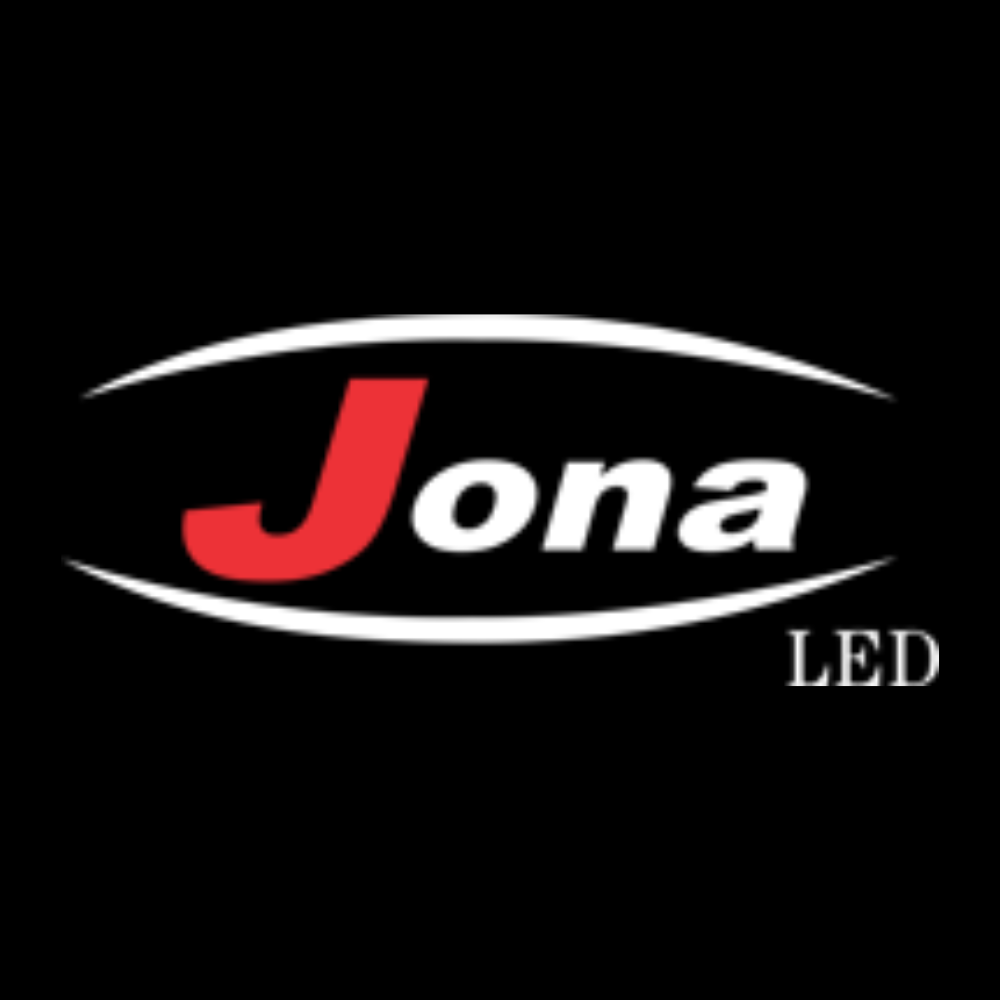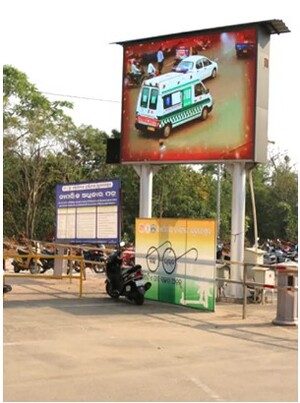Illuminating Spaces: How LED Displays Revolutionize Hospitals, Virtual Studios, Government, and Conference Rooms
Body
In the digital age, LED displays have become crucial to modern communication. These vibrant, high-definition screens offer more than just beautiful visuals—they are transforming spaces and enhancing functionality across various sectors. Whether you're walking through the serene corridors of a hospital, witnessing the magic of a virtual studio, attending a government briefing, or participating in a corporate boardroom meeting, LED displays play an irreplaceable role.
In this post, we'll explore how LED displays are bringing about seismic changes in hospitals, virtual studios, government institutions, and conference rooms. Using the P.A.S. (Problem-Agitate-Solution) copywriting framework, we’ll walk you through the challenges faced by these sectors, how outdated solutions exacerbate these problems, and why LED displays offer the perfect, awe-inspiring resolution.
LED Displays in Hospitals: Enhancing Precision, Reducing Stress
Problem:
Hospitals, as pillars of modern society, require flawless communication. Despite their critical role in saving lives, many hospitals still rely on outdated signage, paper notices, and convoluted PA systems to convey vital information. Patients wandering aimlessly, delayed updates, and outdated notices are common issues, leading to frustration for both staff and patients.
Poor signage and inefficient communication systems in hospitals result in chaos, and the inability to receive critical information at the right moment can directly impact patient outcomes. Hospitals must deliver real-time updates with precision and urgency, yet many still lack a unified, modern system to do so.
Agitate:
Imagine the panic of a patient trying to find the cardiology department while waiting for an urgent check-up. Or a healthcare worker, running between wards, unsure of room availability or doctor schedules. Even worse, consider the consequences of an emergency alert system that fails to reach critical areas in time. These problems persist because many hospitals are stuck with ancient, unreliable signage that does little to mitigate stress in what is already a high-tension environment.
Hospital environments can already be intimidating. But when patients or their families are left in the dark, waiting for test results, procedures, or even finding their way to the right department, stress levels skyrocket. And in an emergency situation, confusion can become life-threatening.
Solution:
Enter LED displays—an antidote to chaos. LED display for hospitals by Jona LED are being adopted around the world for their myriad benefits:
- Real-Time Information Delivery: High-resolution LED screens in waiting rooms, hallways, and patient rooms can provide real-time updates on appointment schedules, doctor availability, or emergency instructions.
- Wayfinding Solutions: Digital signage powered by LED displays guides patients and visitors through labyrinthine hospital corridors. No more missed appointments or frustrated patients wandering lost.
- Emergency Alerts: In crisis scenarios, LED displays are lifesavers. When seconds matter, they can instantly transmit emergency protocols and warnings, ensuring a coordinated and swift response.
Case Study:
Take Cedars-Sinai Medical Center in Los Angeles, which implemented large-scale LED displays throughout their hospital. After integrating digital wayfinding kiosks and real-time patient status boards, the hospital reported a 28% reduction in patient wait times and a 17% improvement in patient satisfaction scores. They even managed to reduce the workload on administrative staff by automating many routine tasks like appointment reminders.
With their sleek design and energy efficiency, LED displays are revolutionizing the way hospitals communicate, creating a more organized, safer, and less stressful environment for both staff and patients.
LED Displays for Virtual Studios: Redefining Storytelling and Immersion
Problem:
The media and entertainment industry is constantly pushing boundaries, yet creating believable virtual environments has long posed challenges. Traditional green screens, while useful, are limiting. Directors, actors, and production teams often struggle with depth perception, lighting mismatches, and the artificiality that comes with computer-generated imagery (CGI). In short, achieving a fully immersive virtual studio experience has been difficult—until now.
Agitate:
Imagine filming a crucial scene on a green screen and having to spend weeks in post-production aligning CGI backgrounds. Lighting mismatches, actors struggling to imagine their surroundings, and production delays plague the process. Worse yet, the final product may look less-than-authentic, drawing viewers out of the experience.
The disconnect between the physical and virtual can disrupt the creative process. For directors, it’s a painstaking effort to marry live-action footage with backgrounds that don’t exist on set. For actors, it's like performing in a void, where imagination must do all the heavy lifting.
Solution:
LED display for virtual studio by Jona LED offers dynamic, interactive backgrounds that allow for real-time rendering and manipulation. This technology has given rise to virtual studios that can transport actors into entirely different worlds, all in real-time.
- Seamless Integration of Virtual and Physical Elements: LED walls allow filmmakers to create virtual environments that blend seamlessly with live-action elements, eliminating the need for green screens and enhancing depth perception.
- Flexible and Adaptive: Directors can change backgrounds or settings at the touch of a button, cutting down on set construction costs and eliminating post-production nightmares. LED screens can replicate any environment imaginable, from sun-soaked beaches to bustling cityscapes, all while providing natural lighting and shadows.
- Enhanced Creative Freedom: With LED displays, actors no longer need to imagine their surroundings—they’re right there, fully rendered. This leads to better performances and a more engaging, immersive storytelling experience.
Case Study:
Lucasfilm pioneered LED wall technology for The Mandalorian, where they used a 270-degree semicircular LED display to create stunning, photorealistic landscapes. By using a combination of real-time rendered backgrounds and physical sets, the production reduced the need for green screen work and post-production editing, cutting filming time by 50%. The result? Immersive visuals that looked as though they had been shot on location.
With LED displays, virtual studios now have the power to turn the impossible into reality, offering unparalleled flexibility and realism in content creation.
LED Displays for Government: Clarity, Transparency, and Public Trust
Problem:
Government communication is vital in maintaining public trust and ensuring that citizens stay informed. Yet, many government buildings, from city halls to federal agencies, still rely on static signs, paper bulletins, and dated technology for public announcements. In times of crisis, this lack of modern communication tools can lead to chaos, misinformation, and public unrest.
Governments face increasing demands for transparency and efficient public service. However, a lack of real-time communication tools means that many public announcements, events, or emergency updates go unnoticed or delayed.
Agitate:
Picture a government building with outdated, fading posters, and announcements that no one bothers to read. In an emergency, citizens scramble for information, only to find that the available resources are inadequate. Whether during a public event or a natural disaster, a lack of timely communication erodes public trust, leaving citizens feeling disconnected from their leaders.
Citizens expect clarity and accountability, and when communication falls short, frustration sets in. Static bulletin boards and dated PA systems only contribute to the noise, when what’s needed is a clear and dynamic way to share information.
Solution:
LED display for government by Jona LED bring communication into the modern era, providing a sleek, efficient, and visually engaging way to keep citizens informed.
- Real-Time Updates: Whether it's a public health crisis, a city council meeting, or a local election, LED displays can provide up-to-the-minute information in real-time.
- Transparency and Engagement: Display live feeds of government sessions, financial updates, and progress reports on public projects, ensuring that citizens are always in the loop.
- Crisis Communication: In times of emergency, LED displays can broadcast vital information immediately, directing the public to safety or sharing emergency contact information.
Case Study:
In the city of Amsterdam, LED displays were installed in key public spaces to keep citizens informed about government activities and provide real-time emergency updates. The city saw a 40% increase in citizen engagement during public forums and elections, with residents reporting that they felt more connected to local governance.
By making public communication more transparent and efficient, LED displays help governments foster trust, improve citizen engagement, and maintain public safety.
LED Displays in Conference Rooms: Elevating Professionalism and Collaboration
Problem:
In the corporate world, communication is key. Yet, many conference rooms still rely on aging projectors and low-quality screens that do little to inspire confidence or creativity. Presentations are often marred by pixelated images, poor brightness, and a lack of interactivity, creating barriers to effective collaboration.
Boardrooms are meant to be spaces of decision-making and creativity, yet outdated technology makes meetings less productive and more frustrating. Pixelated presentations, difficult-to-read charts, and unreliable video conferencing tools prevent teams from operating at their full potential.
Agitate:
Picture walking into a high-stakes meeting with a client, only to have your presentation suffer from poor visual quality. Charts are unreadable, colors are washed out, and videos stutter. Or imagine a video conference where the remote team can barely see or hear the presentation. It’s a frustrating and unprofessional experience.
When communication is compromised, so is the decision-making process. Meetings become longer, ideas get lost, and projects slow down.
Solution:
LED display for conference room by Jona LED is being enhanced by creating a more efficient and stylish environment for meetings.Their high resolution, superior brightness, and interactivity make them ideal for both in-person and remote meetings.
- Crystal-Clear Presentations: With high-definition visuals, LED displays ensure that presentations are sharp, detailed, and easy to read, even in large conference rooms.
- Interactive Capabilities: Touch-enabled LED displays allow teams to collaborate in real-time, marking up charts, brainstorming ideas, and bringing their creative visions to life on screen.
- Seamless Video Conferencing: LED displays provide clear, crisp visuals during video conferences, allowing remote teams to feel fully integrated into the meeting.
Case Study:
Microsoft installed interactive LED displays in their conference rooms, which allowed for real-time collaboration between their global teams. As a result, they saw a 32% increase in meeting productivity, with projects moving faster and ideas flowing more freely thanks to the interactive features of their LED walls.
LED displays are more than just screens; they’re tools that elevate professionalism, enhance collaboration, and ensure that your business meetings are productive and engaging.
Conclusion: A Brighter Future with LED Displays
LED displays are not just about aesthetics; they’re about efficiency, communication, and enhancing the user experience across a variety of environments. From hospitals that need clear, real-time information, to virtual studios creating stunning worlds, to governments that require transparent communication, and conference rooms where collaboration thrives—LED displays are the future.
It's time to leave behind outdated technology and embrace the vibrant, efficient, and transformative power of LED displays. Whether in healthcare, media, governance, or corporate environments, LED technology offers elegant, practical solutions to modern problems. As these case studies show, the results are undeniable: improved efficiency, better communication, and a brighter future for all.












Comments